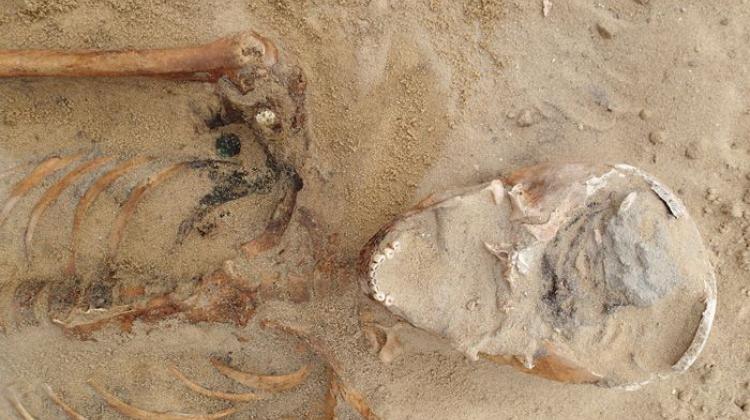Mińsk Mazowiecki/ Archaeologists discovered plague victims from several hundred years ago

More than one hundred victims of an epidemic that swept through Poland in the seventeenth century have been discovered by archaeologists during excavations in a forgotten cemetery in the centre of Mińsk Mazowiecki (Mazowieckie Province).
The discovery was made during the renovation and reconstruction of streets in the area of the roundabout Dziąga, near the modern cemetery. Work on the project site will continue until December. Archaeologists suspect that there can be further discoveries relating to the past of the city.
"The fact that old cemetery was located in this place, was already known a few years ago. During minor earthworks, workers discovered human bones" - said head of excavations, Szymon Lenarczyk, an archaeologist from the company " Wykop na poziomie". He added, however, that only now, thanks to the extensive work, its scale was determined, and the number of discovered burials - over a hundred - surprised even the researchers.
This is not a typical seventeenth century cemetery. There are many indications that the buried were victims of an epidemic. "We have found only few artefacts in the graves, while generally there are considerably more in the necropolises from this period - such as clothing accessories, for example studs, buckles and pins. In this case, everything indicates that the dead were buried in the graves naked or in shrouds. The skeletons were buried without funerary objects" - said Lenarczyk.
Some of the discovered bones show signs of burning - perhaps corpses were burned or attempted to burn to prevent the spread of the plague - suggested the archaeologist.
Anthropologists have not found any traces of violence or fighting on the bones discovered in the cemetery. Only in one case a dagger fragment was still stuck in the chest of the deceased.
The graves discovered in Mińsk Mazowiecki were extremely shallow - now they are just half a meter below the surface of the modern road.
The age of the necropolis was determined based on the few coins that accompanied the dead.
The fact that adds mystery to the cemetery is that some of the graves are collective - several bodies would be buried in one pit, sometimes two adult and two young people, probably children.
Studies indicate that the bodies buried in the graves are probably of the victims of cholera. This disease is caused by bacteria (vibrio), spread through contaminated water or food. Its spread is easier during the war and natural disasters - the events that took place in the seventeenth-century Poland. The hypothesis will be verified in expert analyses.
"Everything indicates that we are dealing with a hastily prepared necropolis, which was probably used over a very short period during an epidemic" - concluded Lenarczyk.
PAP - Science and Scholarship in Poland, Szymon Zdziebłowski
szz/ zan/ mrt/
tr. RL
Przed dodaniem komentarza prosimy o zapoznanie z Regulaminem forum serwisu Nauka w Polsce.















